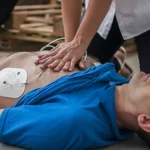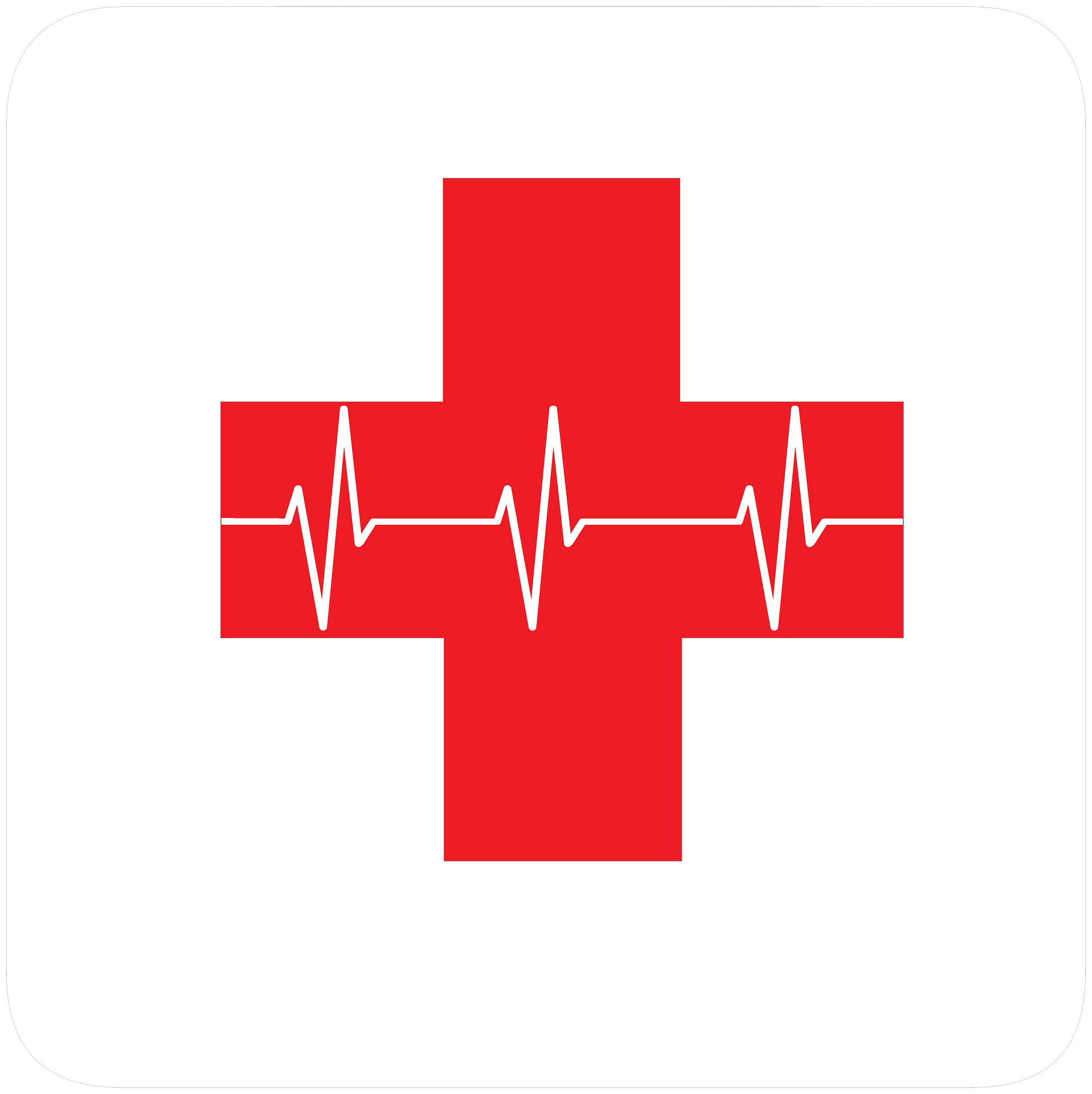350,000 cardiac arrests occur alone in the United States every year making bystander CPR an essential skill. Cardiopulmonary resuscitation (CPR) is a medical procedure that helps to pump blood for a patient who has undergone a cardiac arrest. The heart of the affected individual cannot perform this function. A series of 30 chest compressions are administered to help save a life or improve the chances of survival during a sudden cardiac arrest. When people suffer from cardiac arrest it results in the heart not pumping blood to the brain and around the body.
The American HealthCare Academy is dedicated to providing professional an accessible training in CPR and other life-saving procedures.
A high-quality CPR can double or triple a person’s chance of survival.
In addition to CPR certification, we also offer First Aid certification, a bloodborne pathogens course, and a dual CPR and AED certification course. So, learn CPR and save lives in an emergency.
Everyone must consider looking for CPR training to comprehend the top ten facts of this vital medical procedure:
Stabilizes the Patient
When a cardiac arrest victim receives timely CPR before the paramedics arrive on the spot, it triples their chances of survival. Administering CPR during this critical window can save the patient from a near-death situation.
Bodily Strength Counts
There are some looking for CPR training and CPR classes at a much earlier age. Even a nine-year-old can perform CPR if they possess the bodily strength to carry out this medical procedure. You shouldn’t let concerns about your own bodily strength prevent you from receiving CPR training and certification.
Every Minute Makes a Difference
When the oxygen supply to the brain is abruptly disrupted due to a serious medical condition. It causes permanent brain damage in a matter of four to six minutes. The chances of a cardiac arrest victim surviving decreases by ten percent with every minute lost in providing CPR.
Practical Exposure is Crucial
Another one of the 10 facts about CPR is that the professionals like medical practitioners, firefighters, and police officers need to have the latest knowledge on CPR practices and techniques. The more practical experience they have in administering this procedure, the better they get at it. If they do apply theoretical knowledge regularly, it will eventually fade. So they need to keep updating their CPR certification in order to know what to do when cardiac arrests occur.
Existing Laws Designed to Safeguard
Bystanders who come across patients in need of their help need not hesitate to administer CPR fearing legal repercussions should something go wrong. The laws in existence ensure those who offer reasonable assistance are duly protected. These laws, referred to as Good Samaritan laws, differ from state to state but focus on providing safety from frivolous lawsuits for those who attempt to provide care.
Not Confined to Heart Attacks
Apart from the CPR steps being recommended for cardiac arrest victims, CPR also provides relief to those suffocating, choking, drowning, or experiencing a drug overdose. This is just one more reason why everyone should be fully trained and certified in this versatile, life-saving procedure.
Increases Lives Saved
Creating awareness, imparting thorough training, and bettering the levels of preparedness to handle medical emergencies saves many lives annually. Teaching primary children basic survival techniques and the procedure to alert medical services in emergencies is highly beneficial.
Mouth-to-Mouth is Not Warranted
Continued chest compressions resume the flow of blood to the brain. Hence, administering mouth-to-mouth is no longer considered necessary to effectively treat a victim of cardiac arrest. Hands-only (or hands-on) CPR is seen as an effective alternative that can stabilize the victim until medical personnel arrives. Read on to learn what is hands-on CPR?
Restarting the Heart Takes Time
Performing CPR will not immediately restart the patient’s heart. The main purpose of CPR is to keep the individual’s blood flow to the heart, brain and other organs until the medical professionals arrive. Using an automated external defibrillator (AED), on the other hand, actually does restart the victim’s heart, which can prove effective when treating arrhythmia or an irregular heartbeat.
Exhausting Procedure
Administering bystander CPR though considered a lifesaving medical procedure is physically demanding. It can completely exhaust the one performing it on the affected patient. This is why it’s important to know if anyone else at the scene of the emergency is trained in CPR. If so, you can take turns performing CPR on the victim until medical help is able to reach the scene.
Not All CPR is the Same
The steps of CPR change due to the age of the victim. There are subtle, yet very important, differences between adult CPR, child CPR, and infant CPR. For example, if a child needs CPR, you should begin the procedure before calling 911. Since a child’s airway is more fragile than an adult’s, you also want to be more careful when delivering rescue breaths.
Cardiac Arrest is a Leading Cause of Death
In the United States, heart disease, which includes cardiac arrest, is consistently the leading cause of death. Many of these deaths could be prevented, however, if a bystander was trained and certified in CPR.
CONCLUSION – TOP 12 CPR FACTS THAT YOU MUST KNOW
Every year, hundreds of thousands of Americans lose their lives to cardiac arrest. If more people were trained and certified in CPR, countless lives could be saved. When it comes to life-saving procedures, bystander CPR is easy to learn and accessible through in-person and online classes. While we all hope to never be at the scene of a medical emergency, you’ll be glad you took the time to receive this training.
Don’t wait. Empower yourself by learning this life-saving technique. Now that you can receive your CPR certification online, there’s never been a better time to learn this important skill. With online CPR training, you can gain the skills, knowledge, and confidence to perform CPR in the event of an emergency—all without ever leaving the comfort of your home.
Visit our CPR course details page today to find which one of our affordable, online CPR training courses work best for you and your situation.













